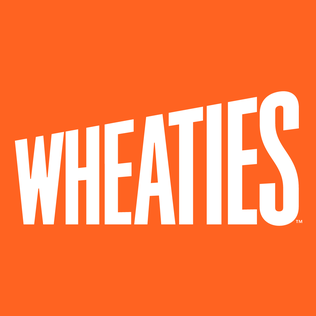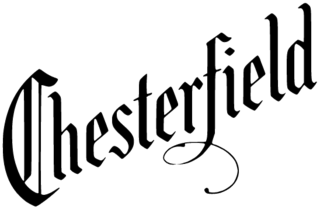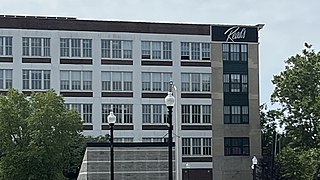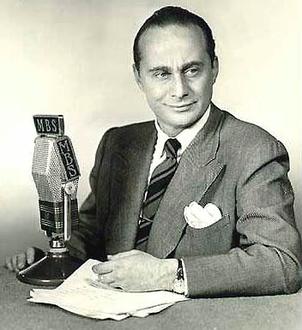
Advertising is the practice and techniques employed to bring attention to a product or service. Advertising aims to present a product or service in terms of utility, advantages and qualities of interest to consumers. It is typically used to promote a specific good or service, but there are a wide range of uses, the most common being commercial advertisement.

Pepsi is a carbonated soft drink with a cola flavor, manufactured by PepsiCo. As of 2023, Pepsi is the second most valuable soft drink brand worldwide behind Coca-Cola; the two share a long-standing rivalry in what has been called the "cola wars".

Miller's Crossing is a 1990 American neo-noir gangster film written, directed and produced by Joel and Ethan Coen, and starring Gabriel Byrne, Marcia Gay Harden, John Turturro, Jon Polito, J. E. Freeman, and Albert Finney. The plot concerns a power struggle between two rival gangs and how the protagonist, Tom Reagan (Byrne), plays both sides against each other.

A fedora is a hat with a soft brim and indented crown. It is typically creased lengthwise down the crown and "pinched" near the front on both sides. Fedoras can also be creased with teardrop crowns, diamond crowns, center dents, and others, and the positioning of pinches can vary. The typical crown height is 4.5 inches (11 cm). The term fedora was in use as early as 1891. Its popularity soared, and eventually it eclipsed the similar-looking homburg.

Wheaties is an American brand of breakfast cereal that is made by General Mills. It is well known for featuring prominent athletes on its packages and has become a cultural icon in the United States. Originally introduced as Washburn's Gold Medal Whole Wheat Flakes in 1924, it is primarily a wheat and bran mixture baked into flakes.

Gimbel Brothers was an American department store corporation that operated for over a century, from 1842 until 1987. Gimbel patriarch Adam Gimbel opened his first store in Vincennes, Indiana, in 1842. In 1887, the company moved its operations to the Gimbel Brothers Department Store in Milwaukee, Wisconsin. It became a chain when it opened a second, larger store in Philadelphia, Pennsylvania, in 1894, moving its headquarters there. At the urging of future company president Bernard Gimbel, grandson of the founder, the company expanded to New York City in 1910.

Chesterfield is a brand of cigarette, named after Chesterfield County, Virginia. The brand is owned by conglomerate Altria and produced by its subsidiary Philip Morris USA.

McKee Foods Corporation is a privately held and family-owned American snack food and granola manufacturer headquartered in Collegedale, Tennessee. The corporation is the maker of Drake's Cakes, Fieldstone Bakery snacks and cereal, Little Debbie snacks, and Sunbelt Bakery granola and cereal. The company also formerly operated Heartland Brands.

Art Gillham was an American songwriter, who was among the first crooners as a pioneer radio artist and a recording artist for Columbia Records.

Hess's, originally known as Hess Brothers, was a department store chain based in Allentown, Pennsylvania. The company was founded a single store in 1897, and grew to nearly 80 stores by its commercial peak in the late 1980s. The chains stores were closed or sold off in a series of deals in the early to mid-1990s.

Russell Patterson was an American cartoonist, illustrator and scenic designer. Patterson's art deco magazine illustrations helped develop and promote the idea of the 1920s and 1930s fashion style known as the flapper.

Read's Department Stores was a Bridgeport, Connecticut-based retail chain founded in 1857 by D. M. Read. Known for its classy, upscale merchandise, the flagship store was once hailed as New England's largest department store. It expanded to several other locations in the 1950s and 1960s, but these closed progressively through the 1980s and 1990s.

The Strange Dr. Weird is a radio program broadcast on Mutual from 1944 to 1945.

The Russell Industrial Center is an industrial factory turned to commercial complex of studios and shops that is located at 1600 Clay Street in Detroit, Michigan. The Russell Industrial Center is a 2,200,000-square-foot (200,000 m2), seven building complex, designed by Albert Kahn for John William Murray in 1915. It contains studios and lofts and serves as a professional center for commercial and creative arts.

Linspire is a commercial operating system based on Debian and Ubuntu and currently owned by PC/OpenSystems LLC. It had been owned by Linspire. Inc. from 2001 to 2008, and then by Xandros from 2008 to 2017.
Bigsby & Kruthers was a high profile men's clothier in Chicago for 30 years from 1970 to 2000. The privately held company was founded by Joe Silverberg, joined shortly thereafter by his brother, H. Gene Silverberg, who both got their start as children working on Maxwell Street.

Pegeen Fitzgerald was an American radio personality perhaps best known for co-hosting The Fitzgeralds on radio in New York City.

Christian William Miller was an American artist and model who contemporaries qualified as "one of the most beautiful men" in the gay social scene of New York City in the 1940s.
Ben Zion Shenker (1925–2016) was a world-renowned American Hasidic composer and hazzan (cantor), associated with the Modzitz hasidic dynasty. Shenker was born in the heyday of the American hazzan. He became interested in the art as a child, and was performing on radio by his early teens. Soon after, he became close to Rabbi Shaul Taub, the Holocaust-surviving Modzitz Grand Rabbi, who was known for his mystical Hasidic compositions. He dedicated much of his life to recording and publishing the large stock of pre-war Modzitz songs, as well as Taub's post-war work. Shenker created a music label, Neginah, for the purpose of recording those songs, and himself became a composer of hundreds Modzitz moded songs.

The Offerman Building is a historic building at 503–513 Fulton Street in the Downtown Brooklyn neighborhood of New York City. Designed by Danish architect Peter J. Lauritzen in a Romanesque Revival style, the eight-story building was built between 1890 and 1892 as a commercial structure, housing the S. Wechsler & Brother department store. Although the lower stories remain in commercial use, the upper stories were converted into a 121-unit residential complex in the 2010s. The building is a New York City designated landmark and is listed on the National Register of Historic Places.


















